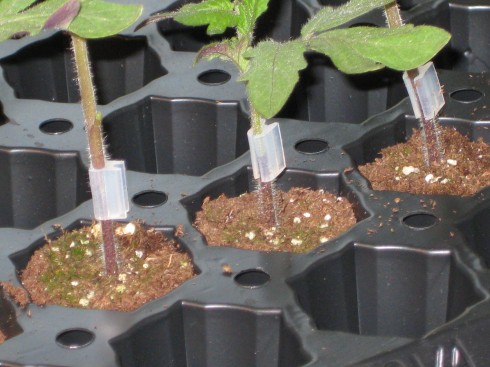During the last 24 hours, since I last inspected the grafted plants, about half of the first batch grew vigorous sets of adventitious roots from the scion. When I opened the cover the trays looked like miniature mangrove swamps. In most cases the grafts had taken and I was able to pinch or cut off the roots. Some grafts had failed, so I remade those; I’m not very optimistic about those grafts, but it was worth a shot.
It’s a mystery to me why those scions put out roots. I can understand it if it was a bad graft — the scion was doing what it could to survive. But if the graft had taken, and was physically strong, then why develop roots? Not enough sustenance coming from the rootstock?
I grafted one tray from the third batch; two trays to go. I have the beginnings of a complete second group (which I planted when I thought I had to start over) so I have to decide whether to proceed with that or live with the reduced number of grafts that I now have.










